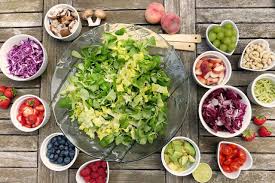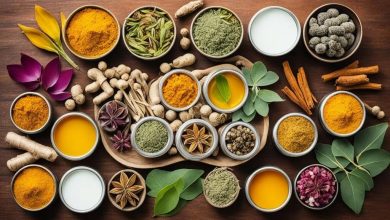Diet for Achalasia: Simple Meal Plans That Actually Work!

Achalasia is a rare disorder that affects the esophagus, leading to difficulty in swallowing (dysphagia). This condition occurs when the muscles in the esophagus become stiff or weakened, and the lower esophageal sphincter (LES), which normally relaxes to allow food to pass into the stomach, fails to do so. As a result, food and liquid can’t properly move through the esophagus, causing discomfort, regurgitation, and potential weight loss.
Diet plays a significant role in managing achalasia. By selecting the right foods and modifying eating habits, individuals with achalasia can significantly reduce symptoms, improve nutrition, and enhance their overall quality of life.
Related Article: Breakthrough New Treatment for Achalasia in 2025: Latest Achalasia Solution Revealed
What is Achalasia?
Achalasia is a rare and chronic disorder of the esophagus, the muscular tube that carries food and liquids from the mouth to the stomach. This condition affects the ability of the esophagus to move food downward and prevents the lower esophageal sphincter (LES) a ring of muscle at the junction of the esophagus and stomach from relaxing properly. As a result, individuals with achalasia experience difficulty swallowing, regurgitation, and sometimes chest pain.
Although achalasia is not life-threatening, it significantly impacts quality of life and can lead to serious complications if left untreated. The causes, symptoms, diagnosis, treatment options, and long-term management of achalasia.

Understanding Achalasia: How the Esophagus Normally Works
Under normal circumstances, swallowing triggers a coordinated series of muscle contractions (peristalsis) that push food toward the stomach. The LES, which remains closed to prevent stomach acid from flowing backward, relaxes to allow food to pass into the stomach.
In achalasia, two key problems occur:
- Loss of peristalsis– The esophageal muscles fail to contract properly, making it difficult to push food downward.
- Failure of LES relaxation– The lower esophageal sphincter does not open fully, causing food to accumulate in the esophagus.
What Causes Achalasia?
The exact cause of achalasia remains unclear, but researchers believe it results from the degeneration of nerve cells in the esophagus, specifically those in the myenteric plexus, which controls muscle movements. Possible contributing factors include:
- Autoimmune response– The immune system may mistakenly attack nerve cells in the esophagus.
- Viral infections– Some studies suggest a link between achalasia and viruses like herpes simplex or measles.
- Genetic predisposition– Rarely, achalasia may run in families.
- Secondary achalasia– Certain conditions, such as Chagas disease (caused by the parasite Trypanosoma cruzi) or tumors, can mimic achalasia.
Related Article: Esophageal Achalasia Diet: 10 Life-Changing Foods That Make Swallowing Easier
Symptoms of Achalasia
The symptoms of achalasia develop gradually and worsen over time. Common signs include:
- Dysphagia (Difficulty Swallowing)– The most prominent symptom, affecting both solids and liquids. Patients often describe a sensation of food “sticking” in the chest.
- Regurgitation– Undigested food or saliva may flow back into the mouth, especially when lying down or bending over.
- Chest Pain– Some individuals experience discomfort or pain behind the breastbone due to esophageal spasms or food retention.
- Weight Loss and Malnutrition– Difficulty eating leads to reduced calorie intake.
- Heartburn– Unlike GERD (gastroesophageal reflux disease), heartburn in achalasia is not caused by acid reflux but by food fermentation in the esophagus.
- Nocturnal Coughing or Aspiration Pneumonia– Regurgitated food can enter the lungs, causing respiratory issues.
Principles of a Diet for Achalasia
When designing a diet for achalasia, the goal is to select foods that are soft, moist, and easy to swallow. Avoiding foods that may aggravate symptoms is just as important as choosing the right foods. Here are the basic principles to consider when crafting a diet plan for achalasia:
- Soft and Easy-to-Swallow Foods: Choose foods that don’t require excessive chewing and are less likely to cause food to become lodged in the esophagus.
- Moist and Well-Cooked Foods: Foods that are moist, such as soups, sauces, and stews, are much easier to swallow than dry foods.
- Avoiding Acidic or Spicy Foods: These types of foods can irritate the esophagus and increase the risk of reflux.
- Small, Frequent Meals: Eating small meals throughout the day can reduce the pressure on the LES and prevent overloading the esophagus.
- Thickened Liquids: For those experiencing regurgitation or aspiration, thickening liquids with products like thickening agents can help prevent them from entering the lungs.
Simple Meal Plans for Achalasia
Creating a daily meal plan for achalasia doesn’t have to be complicated. The goal is to include easily digestible, moist foods that provide essential nutrients while being gentle on the esophagus. Below are examples of simple meal plans that are both nutritious and suitable for people with achalasia.

Day 1: Simple, Nourishing Meals
Breakfast
- Smoothie Bowl: A smooth, blended bowl made with banana, Greek yogurt, and almond milk. Top with soft berries like strawberries or blueberries (mashed if necessary) for added flavor and antioxidants.
- Whole Wheat Toast: Soft toast with a thin layer of butter or nut butter.
Lunch
- Pureed Vegetable Soup: A smooth, pureed soup made from carrots, sweet potatoes, and a bit of low-sodium broth. Add in some soft, mashed potatoes for extra creaminess.
- Mashed Avocado: A soft, creamy avocado mash seasoned with a bit of salt and olive oil.
Dinner
- Baked Salmon: A moist, flaky salmon fillet. Ensure it’s baked until soft and served with mashed sweet potatoes or cauliflower for easy swallowing.
- Steamed Zucchini: Soft, steamed zucchini seasoned lightly with herbs.
Snacks
- Applesauce: Unsweetened applesauce or fruit purees.
- Soft Cottage Cheese: Full-fat cottage cheese with a drizzle of honey or jam for extra flavor.
Related Article: Achalasia: Read The Overall Information About The Neurological Disorder
Day 2: Easy-to-Swallow Protein and Vegetables
Breakfast
- Scrambled Eggs with Soft Cheese: Lightly scrambled eggs cooked with cream cheese for added smoothness.
- Porridge: Soft oatmeal made with almond milk, topped with mashed banana or berries.
Lunch
- Chicken Puree: Pureed chicken with broth or a little cream, seasoned with salt and herbs.
- Pureed Butternut Squash Soup: A silky-smooth soup that’s rich in vitamins and easy to consume.
Dinner
- Soft Mashed Potatoes: Mashed potatoes with added butter and cream for smooth texture.
- Steamed Fish Fillet: Tilapia or cod cooked until tender and flaky. Serve with a side of well-cooked peas or carrots.
Snacks
- Greek Yogurt: A creamy, non-fat yogurt with a touch of honey.
- Soft Rice Pudding: A homemade, soft, custard-like dessert made with rice and milk.
Day 3: Balanced, Soft Meals
Breakfast
- Avocado Smoothie: Blend avocado with coconut milk, spinach, and a handful of berries for a smooth, nutrient-rich smoothie.
- Soft Pancakes: Soft, fluffy pancakes with a light drizzle of maple syrup.
Lunch
- Pureed Chicken Soup: Chicken breast cooked with vegetables, blended until smooth for easy swallowing.
- Baked Sweet Potato: Baked until soft, mashed with butter and a dash of cinnamon.
Dinner
- Soft Meatballs: Ground turkey or beef meatballs cooked until tender and served with mashed cauliflower.
- Creamed Spinach: Lightly sautéed spinach in a creamy sauce made with heavy cream and butter.
Snacks
- Banana or Pear Puree: Freshly pureed soft fruits, like ripe bananas or pears.
- Soft Custard or Pudding: Homemade or store-bought custard for a smooth, creamy snack.
Related Article: Cancer Of The Esophagus Or Upper Stomach Join The Fight Against
Foods to Avoid with Achalasia
While a diet for achalasia should focus on soft, moist foods, there are certain foods that are best avoided due to their potential to aggravate symptoms. These include:
1. Hard, Dry, or Crusty Foods
- Examples: Nuts, granola, chips, raw vegetables (carrots, celery), and dry crackers.
- These can be difficult to chew and swallow, and may become lodged in the esophagus, exacerbating symptoms.
2. Spicy or Acidic Foods
- Examples: Hot peppers, spicy sauces, tomatoes, citrus fruits.
- These can irritate the esophagus, increasing heartburn or reflux.
3. Caffeinated Beverages
- Examples: Coffee, soda, and energy drinks.
- Caffeine can relax the LES, which may worsen regurgitation and reflux.
4. Alcohol
- Alcoholic beverages, especially wine, can relax the LES and increase the chances of acid reflux, making it more difficult to manage achalasia symptoms.
5. High-Fat or Fried Foods
- Examples: Fried chicken, pizza, and fatty meats.
- These foods are harder to digest and may exacerbate reflux, leading to discomfort and difficulty swallowing.
Managing Achalasia Beyond Diet
In addition to dietary changes, individuals with achalasia may benefit from other lifestyle modifications to better manage their symptoms:
1. Eating Habits
- Eat slowly: Chewing food thoroughly and taking time between bites can help ensure food moves properly through the esophagus.
- Smaller meals: Eating smaller, more frequent meals can reduce the pressure on the LES.
- Elevate the head of your bed: If you experience nighttime regurgitation, sleeping with the head of your bed elevated can help reduce reflux symptoms.
2. Hydration
- Drink plenty of water: Staying hydrated helps keep the esophagus moist and assists in the swallowing process. Sometimes, thickened liquids may be recommended to prevent aspiration.
3. Medical Treatments
- While diet plays an essential role, some individuals with achalasia may require medical interventions such as pneumatic dilation, surgery, or medications to help manage symptoms.
Conclusion
The right diet for achalasia is essential to managing the condition effectively and preventing complications such as malnutrition, dehydration, and discomfort. By focusing on soft, moist foods that are easy to swallow and avoiding foods that could trigger reflux, individuals with achalasia can reduce symptoms and improve their quality of life. Simple Treatment for Achalasia, meal plans, such as those outlined in it, can help individuals take control of their diet and provide much-needed relief.
Related Article: Feeling Of Stomach Being Empty Exploring The Benefits Of Wellness




